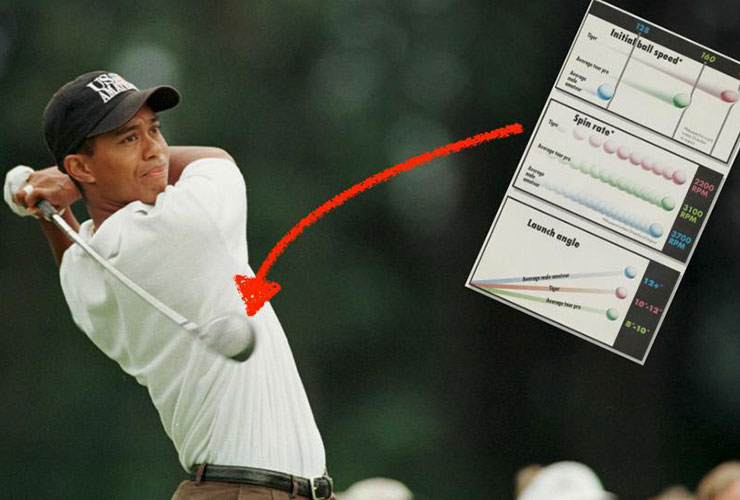By Luke Kerr-Dineen
When a player like Tiger Woods comes along and dominates their chosen sport so thoroughly and comprehensively, it’s not by accident. It’s because through some combination of supreme talent and supreme skill, they’ve figured out a specific, systematic advantage before everybody else. They figured out how to break the game and leave everybody else rushing to catch up.
For young Tiger, his game-breaking tactic came off the tee. During an era where many players prized technique and accuracy, Tiger’s distance was unfathomable. He was hitting wedges into Augusta National’s par 5s when others were playing them as three-shot holes. And unlike the tour’s distance leader of the time, John Daly, Tiger hit an astonishing 69 per cent of his fairways.
As I tweeted about below, that mind-blowing combination of distance and accuracy launched an era of Tiger-proofing golf courses, as the game itself was forever changed.
An underrated fact about peak Tiger Woods was his driving ACCURACY.
Between 1996 and 2000, Tiger averaged 69.6% driving accuracy. That would rank him inside the top 6 on tour in 2022 (!)
Hitting that many fairways, with such mind-blowing power, was an unbeatable combination🤯🐐 pic.twitter.com/15TqJKBWdW
— LKD (@LukeKerrDineen) November 23, 2022
But the funny thing about Tiger doing all this more than 20 years ago is that we only have tiny snippets of the kind of data that we’ve become accustomed to nowadays. Tiger’s clubhead and ball speeds weren’t clocked for every swing like they are now. For the early part of his career, that kind of data wasn’t hardly known at all.
Until now!
Young Tiger’s ball speed, uncovered
That’s because the other day, my colleague Will Irwin and I stumbled upon a fantastic article from the 1998 issue of Golf Digest which highlights Tiger Woods’ launch, spin and ball speed as measured by Titleist in 1996.
The data itself can be found below, but a few things stand out to me:
- Keep in mind Tiger was doing this with a 1996-era golf ball, a 43.5-inch length driver with a steel shaft and a King Cobra driver that’s comparable to modern day 3-woods. Translating 180mph with that equipment would mean swinging well into the 190s with modern-day equipment, probably more.
- Considering Tiger’s 18 mph average was about 20mph higher than the tour’s average at the time, that same relative advantage in the modern-era would mean he would have the highest average on tour (by far).
- Tiger’s spin rate is also incredible. During an era where players would often reach for more spin as a way of gaining control, Tiger’s driver numbers were squarely in the Optimal Launch Condition promised land.
- It meant his lower spin rate was maximising his distance, and yet he was somehow not sacrificing any control — he was still hitting almost 70 per cent of his fairways.
Anyway, you can check out the images for yourself below.

You may also like:
All you need to know on the new golf rules for 2023
Cam Smith right at home at Australian PGA Championship
Gainer leads the way at LET finale in Spain
Adam Scott making big changes for 2023
Cameron Smith eyes winning return to Australia
‘I thought I was dying. How golf kept me going’
PGA Tour University star earns trip to Dubai Desert Classic
Jumeirah Golf Estates secures 10-year deal for DPWTC
City boss Pep enjoys World Cup break in UAE
LOOK: Augusta’s new-look 13th hole revealed
Was Rory at his best in 2022? Take a look at the stats
Tiger’s latest victory in PGA Tour 2022 PIP standings
Legends of the fall: Rory and DJ among the big winners this autumn
Gareth Bale’s crafty World Cup golf hack
Take a look at the players who have qualified for the 2023 Masters — as it stands
Dubai Duty Free Golf World Cup returns
LOOK: Rare Tiger Woods shirt up for auction
DP World Tour ‘Race to Dubai’ to return from 2023
LOOK: Prize money payouts at DP World Tour Championship
Rory deserves to brag after DP World Tour triumph
Rahm raises the bar with third DPWTC









